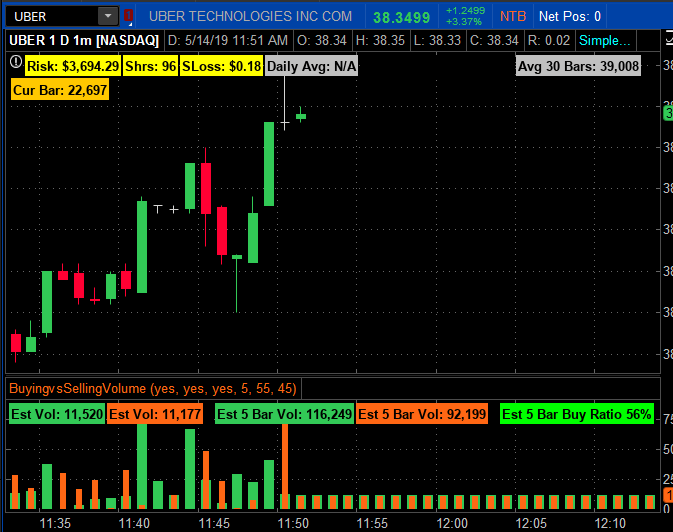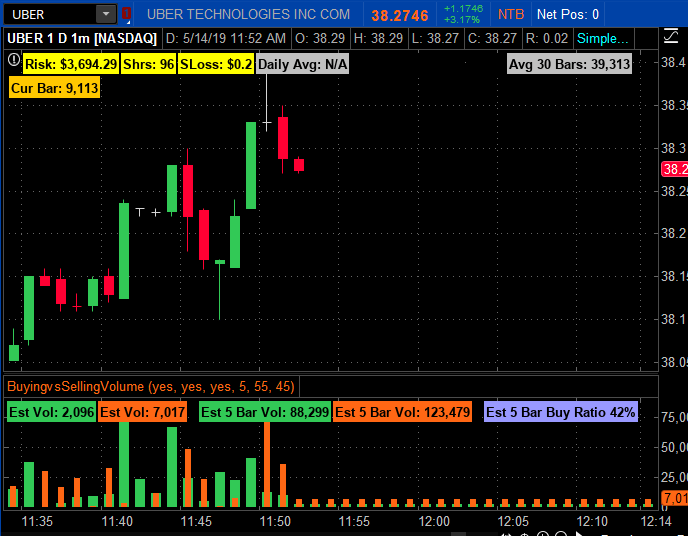| ♥ 0 |
I have the script attached and basically it should have relative comment lines in it for you. It\’s an attempt to get as good as it can get using the TOS data block feeds to determine the amt of buy volume versus sell volume. It\’s my code btw. The issue is that the histogram where the labels show up and the relative volume related bars are showing the future! Yes that\’s right, apparently oracle code, pun intended. It should be showing the latest bar as it fluxuates with incoming volume and price changes and the bars that come after this current aggregation ie. future shouldn\’t be showing at all. Something is causing future bars that haven\’t happened yet to be replicated starting with the current bar. By the way, after the current bar is done, ie. on 1 min chart, one minute has elapsed. That bar looks fine, now it displays the next minute bar and many future bars, all identical and the height of them all change based on trades/vol etc. I\’d attach a video of it in operation but since I can\’t, I\’ll send the code and two captured images one as a before pick and one after. Look for the differences in the bars and notice bars there in the future instead of stopping at the latest current bar. I hope you have a clue, i\’m no expert. Other than this issue all else seems to work ok. I appreciate what you do and hope you can help! Best, Alan
Marked as spam
|
Please log in to post questions.



There should never be a case where you have a candle on the chart for which the following equation equals Double.NaN:
def isBuyNan = (C-L)/(H-L);
def isSellNan = (H-C)/(H-L);
But if you still have concerns then you can apply a completely different solution. Revert to your original code and instead of making the changes I suggested in my answer, change your plot statements to:
plot SellVol = if !IsNaN(close) then Selling else Double.NaN;plot BuyVol = if !IsNaN(close) then Buying else Double.NaN;